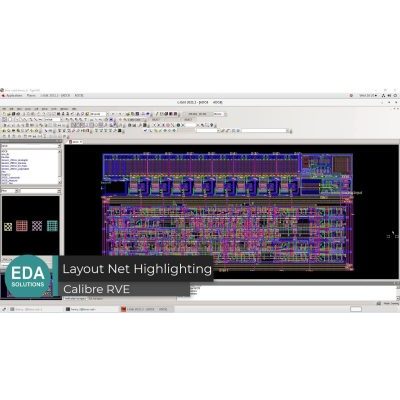
Layout Net Highlighting using Calibre RVE
RVE (result viewing environment) offers powerful features in design error analysis and debugging. Calibre RVE net highlighting features are demonstrated in conjunction with L-Edit.

RVE (result viewing environment) offers powerful features in design error analysis and debugging. Calibre RVE net highlighting features are demonstrated in conjunction with L-Edit.
If you have an issue accessing the Help menu in Calibre, this technical note discusses how to fix the issue.
Simulations can be run in Tanner T-Spice and saved in Nutmeg format so that the results can be displayed in other applications such as EZ-Wave. This allows for simulations to be generated using a T-Spice license, and calculations and viewing can occur on an AMSV license.
Adding simpler waveform returning functions, such as the DATA(2) function. This note discusses how to use this function in your project.
In certain cases, not parsing the netlist view can prevent S-Edit from netlisting the subcircuits that make up the netlist, for example in case of a digital block in CDL format, S-Edit may not netlist the subcircuits (standard cells) which might cause issues downstream in LVS.
The command "util::insert_spare_cells_single_domain" is part of the Nitro utilities package and it is used to insert spare cells to a design and ties off inputs. Users may encounter an error when using this command. Use the patch here to fix the problem.
This technote details the parameters of a Via instance. This allows for the Via instances to have amended parameters, such as the array size when used inside cells that were created using the T-Cell builder.
External Simulation Interface (ESI) controls S-Edit interfaces with simulators. This tech note teaches how to manipulate its settings without using the GUI, which can useful in scripting your CAD environment.

This video demonstrates how to use the T-Cell Builder in L-Edit, a feature that allows the user to parameterise their fixed structures into parameterised cells (PCells). The T-Cell Builder minimises the effort required to write code by automating much of the development process, yet granting the user the freedom to change their code if they wish.

This video shows how to use the 'Schematic compare' feature in S-Edit 2021.2 and later.